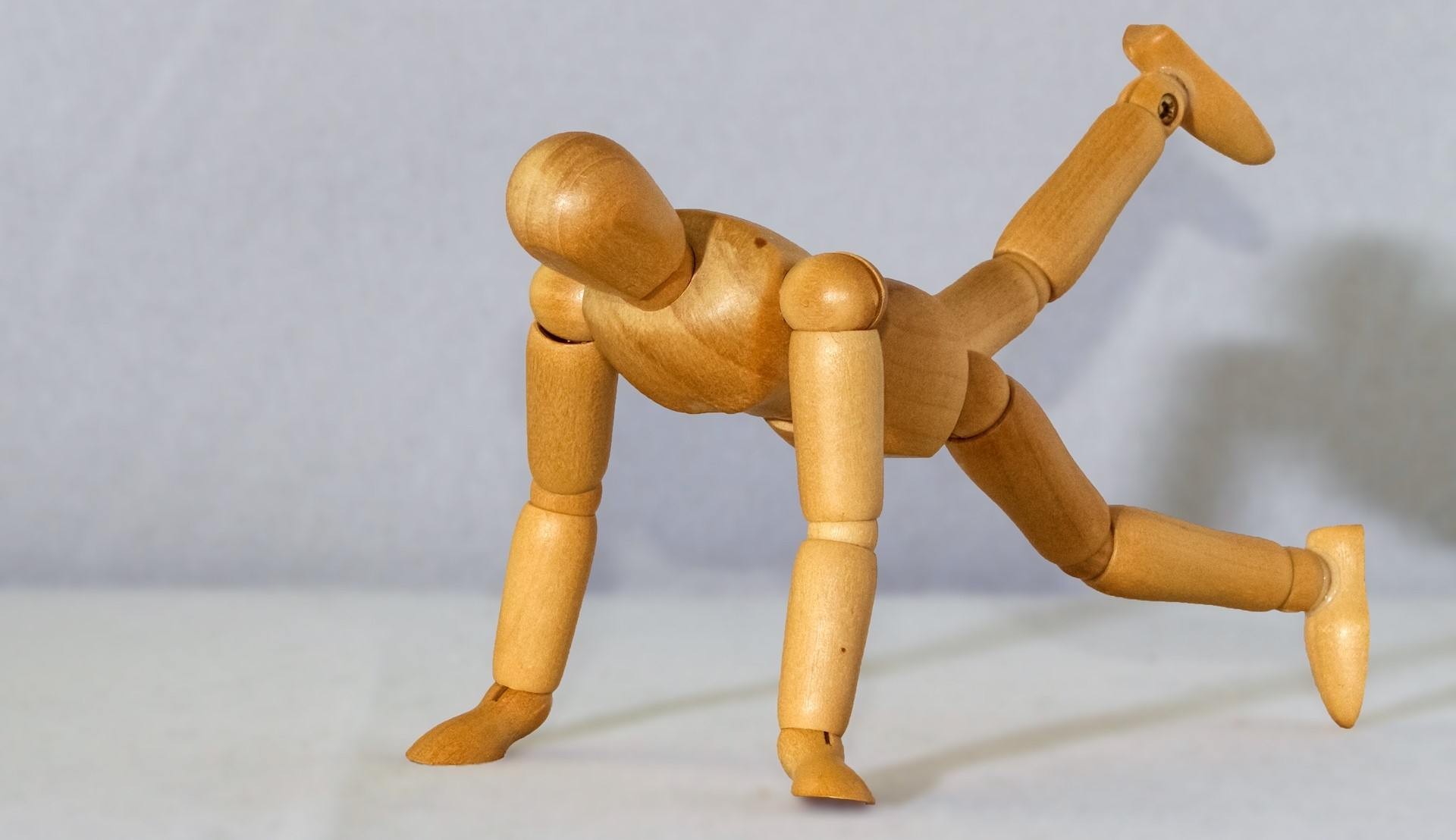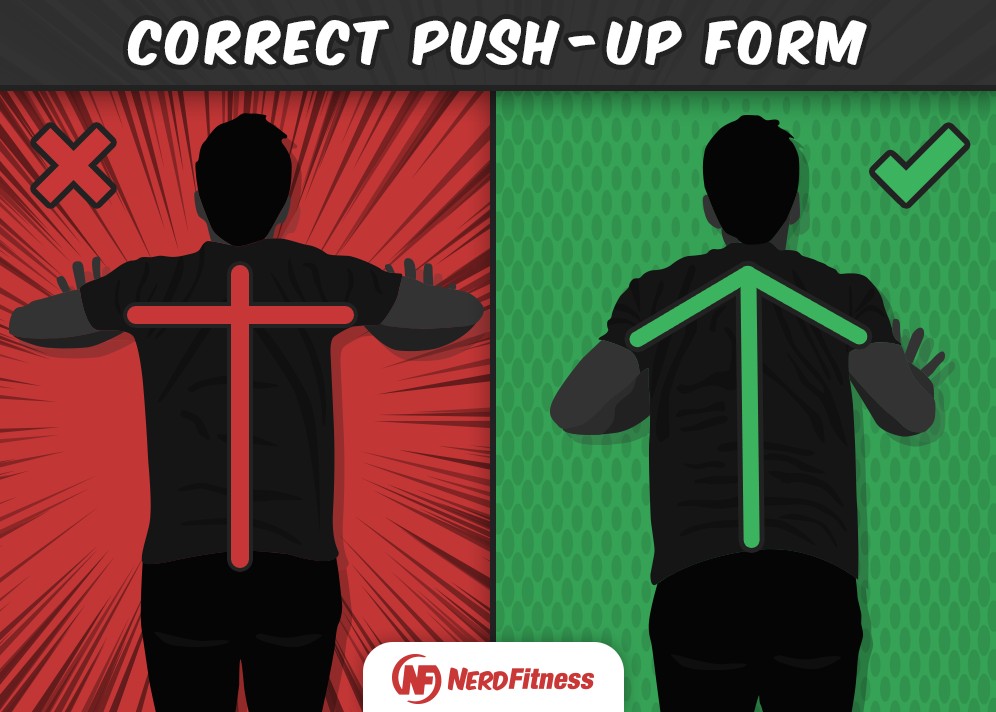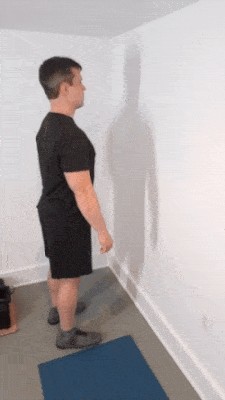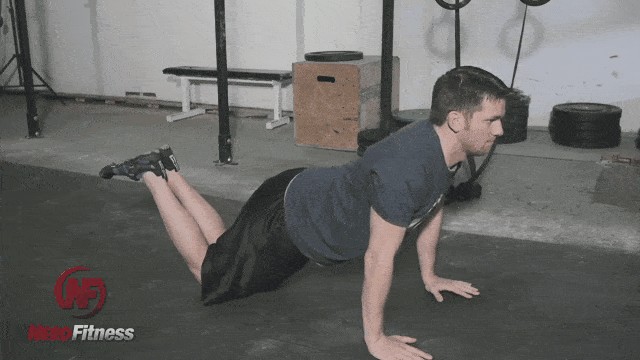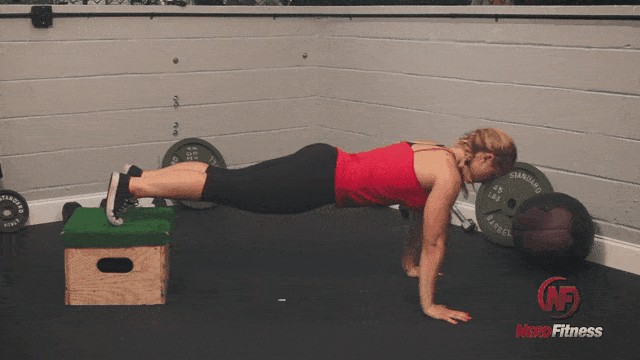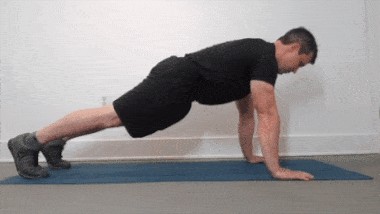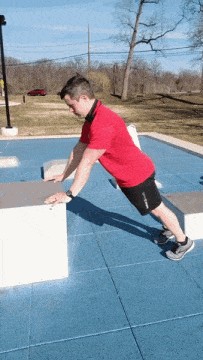Learning how to master push ups is achievable with the right approach, and LEARNS.EDU.VN is here to guide you through a structured progression plan, helping you build strength and achieve your fitness goals. Discover the benefits of push ups, understand proper form, and explore effective training strategies. With consistent effort and the right guidance, you’ll be doing push ups in no time, strengthening your entire body and boosting your overall fitness. Explore LEARNS.EDU.VN for more insightful articles and resources on bodyweight exercises, strength training, and holistic fitness programs.
1. Understanding the Importance of Push-Ups
Push-ups are a fundamental bodyweight exercise that offers numerous benefits for individuals of all fitness levels. Not only do they require no equipment, making them accessible to everyone, but they also engage multiple muscle groups simultaneously. Understanding the significance of push-ups can motivate you to incorporate them into your fitness routine.
1.1. Benefits of Push-Ups
Push-ups are a compound exercise, meaning they work several muscle groups at the same time. This makes them an efficient way to build strength and endurance.
- Upper Body Strength: Push-ups primarily target the muscles in your chest (pectoralis major and minor), shoulders (anterior deltoid), and triceps. Regularly performing push-ups can lead to noticeable improvements in upper body strength, making everyday tasks like lifting and pushing easier.
- Core Stability: Maintaining proper form during push-ups requires engaging your core muscles, including the rectus abdominis, obliques, and transverse abdominis. This helps to stabilize your spine and improve overall core strength, which is essential for balance and posture.
- Full Body Engagement: In addition to the upper body and core, push-ups also engage the lower body muscles, such as the glutes and legs, to maintain a straight line from head to toe. This full-body engagement contributes to improved muscle coordination and overall body strength.
- Cardiovascular Benefits: While push-ups are primarily a strength training exercise, performing them at a moderate to high intensity can also provide cardiovascular benefits. The increased heart rate and blood flow during push-ups can improve cardiovascular health and endurance.
- Accessibility: One of the greatest advantages of push-ups is their accessibility. You can perform them anywhere, anytime, without any equipment. This makes them a convenient option for people who travel frequently or prefer to work out at home.
- Versatility: Push-ups can be modified to suit different fitness levels. Whether you’re a beginner or an advanced athlete, there are numerous variations of push-ups that you can perform to challenge yourself and continue making progress.
1.2. Push-Ups as a Benchmark of Fitness
Push-ups are often used as a benchmark of physical fitness and upper body strength. Many fitness tests and assessments include push-ups as a measure of muscular endurance and overall fitness level.
- Military and Law Enforcement: Push-ups are a standard component of physical fitness tests for military personnel and law enforcement officers. The ability to perform a certain number of push-ups is often a requirement for entry into these professions.
- School Fitness Programs: Many schools include push-ups in their physical education programs as a way to assess and improve students’ fitness levels. Push-up tests can help identify areas where students may need additional strength training.
- Sports and Athletics: Athletes in various sports often use push-ups as part of their training regimen. Push-ups can improve upper body strength and endurance, which are essential for many athletic activities, such as swimming, gymnastics, and combat sports.
- Personal Fitness Goals: For many individuals, achieving a certain number of push-ups is a personal fitness goal. Whether it’s doing 10, 20, or 50 push-ups, reaching this milestone can provide a sense of accomplishment and motivation to continue improving.
1.3. Common Misconceptions About Push-Ups
Despite their popularity, there are several misconceptions about push-ups that can prevent people from incorporating them into their fitness routines.
- Push-Ups Are Only for Men: This is a common myth. Push-ups are beneficial for both men and women. While men may naturally have more upper body strength, women can still benefit greatly from push-ups and improve their overall fitness.
- You Need to Do a Lot of Push-Ups to See Results: Quality over quantity is key when it comes to push-ups. Performing push-ups with proper form is more important than doing a high number of repetitions with poor technique. Focus on maintaining good form and gradually increasing the number of push-ups you can do.
- Push-Ups Only Work the Chest: While push-ups primarily target the chest muscles, they also work the shoulders, triceps, core, and even the legs. This makes them a comprehensive exercise that engages multiple muscle groups.
- Push-Ups Are Too Difficult for Beginners: Push-ups can be modified to suit different fitness levels. Beginners can start with easier variations, such as wall push-ups or knee push-ups, and gradually progress to more challenging variations as they get stronger.
- Push-Ups Are Bad for Your Wrists: When performed with proper form, push-ups should not cause wrist pain. However, if you have weak wrists or a history of wrist injuries, you may experience discomfort. Using push-up handles or dumbbells can help reduce the strain on your wrists.
By understanding the importance of push-ups and addressing common misconceptions, you can approach this exercise with confidence and make it a valuable part of your fitness journey. Remember, consistency and proper form are key to achieving the full benefits of push-ups. At LEARNS.EDU.VN, we offer detailed guides and resources to help you master the technique and progress safely.
2. Assessing Your Current Fitness Level
Before embarking on a push-up progression plan, it’s essential to assess your current fitness level. This will help you determine the appropriate starting point and track your progress over time. A realistic assessment ensures you begin at a manageable level, preventing discouragement and potential injuries.
2.1. Initial Assessment Techniques
There are several techniques you can use to assess your current fitness level and determine your starting point for push-ups.
- Maximum Push-Up Test: Perform as many push-ups as you can with proper form until you reach muscle failure. Record the number of push-ups you completed. This will serve as a baseline for your progress.
- Modified Push-Up Test: If you can’t perform a standard push-up with good form, try modified variations such as knee push-ups or incline push-ups. Perform as many of these modified push-ups as you can until you reach muscle failure, and record the number.
- Form Assessment: Pay attention to your form during the push-up test. Are you able to maintain a straight line from head to toe? Are your elbows flaring out, or are they close to your body? Proper form is crucial for preventing injuries and maximizing the effectiveness of the exercise.
- Resting Heart Rate: Monitor your resting heart rate over a few days. A lower resting heart rate generally indicates better cardiovascular fitness. As you improve your fitness level with regular push-up training, you may notice a decrease in your resting heart rate.
- Body Composition: Assess your body composition by measuring your body fat percentage or calculating your body mass index (BMI). This will give you a general idea of your overall fitness level and help you set realistic goals for your push-up progression plan.
2.2. Identifying Strengths and Weaknesses
Once you’ve assessed your current fitness level, it’s important to identify your strengths and weaknesses. This will help you tailor your push-up progression plan to address your specific needs and goals.
- Upper Body Strength: Evaluate your upper body strength by assessing your ability to perform other exercises such as pull-ups, rows, and bench presses. If you have strong upper body strength, you may be able to start with more challenging push-up variations.
- Core Stability: Assess your core stability by performing exercises such as planks, Russian twists, and dead bugs. A strong core is essential for maintaining proper form during push-ups. If you have weak core stability, focus on strengthening your core muscles before progressing to more difficult push-up variations.
- Flexibility: Assess your flexibility by performing stretches such as chest stretches, shoulder stretches, and wrist stretches. Good flexibility is important for preventing injuries and maximizing your range of motion during push-ups.
- Endurance: Evaluate your endurance by performing cardiovascular exercises such as running, cycling, or swimming. Good endurance is important for performing multiple sets of push-ups without getting fatigued.
2.3. Setting Realistic Goals
Setting realistic goals is crucial for staying motivated and making progress with your push-up progression plan.
- Start Small: If you’re a beginner, start with a small, achievable goal such as being able to perform 5 knee push-ups with good form. As you get stronger, gradually increase your goal.
- Set Short-Term and Long-Term Goals: Set both short-term and long-term goals to stay motivated and track your progress. A short-term goal might be to increase the number of push-ups you can do by one each week, while a long-term goal might be to be able to perform 20 standard push-ups with good form within six months.
- Be Specific: Make your goals specific and measurable. Instead of saying “I want to get better at push-ups,” say “I want to be able to perform 10 standard push-ups with good form by the end of next month.”
- Be Flexible: Be willing to adjust your goals as needed. If you’re making progress faster than expected, you may want to increase your goals. If you’re struggling to meet your goals, you may need to adjust your training plan or make your goals more achievable.
- Track Your Progress: Keep track of your progress by recording the number of push-ups you can do each week, as well as any changes in your body composition, resting heart rate, or other fitness metrics. This will help you stay motivated and see how far you’ve come.
By assessing your current fitness level and setting realistic goals, you can create a push-up progression plan that is tailored to your specific needs and goals. At LEARNS.EDU.VN, we provide personalized guidance and resources to help you track your progress and achieve your fitness aspirations.
3. Understanding Push-Up Form
Proper form is paramount when performing push-ups to maximize their benefits and prevent injuries. Understanding the correct technique ensures you’re engaging the right muscles and avoiding unnecessary strain. This section details the key elements of push-up form and common mistakes to avoid.
3.1. Key Elements of Push-Up Form
Mastering the key elements of push-up form is essential for performing the exercise correctly and safely.
- Starting Position: Begin by placing your hands shoulder-width apart on the ground, with your fingers pointing forward. Your hands should be directly under your shoulders, and your body should form a straight line from head to heels.
- Body Alignment: Maintain a straight line from your head to your heels throughout the exercise. Avoid sagging in the hips or arching your back. Engage your core muscles to help stabilize your spine and maintain proper alignment.
- Elbow Position: Keep your elbows relatively close to your body as you lower yourself down. Avoid flaring your elbows out to the sides, as this can put unnecessary stress on your shoulder joints.
- Range of Motion: Lower your body until your chest touches the ground or your elbows reach a 90-degree angle. If you’re unable to lower yourself this far with good form, modify the exercise by performing push-ups on your knees or against a wall.
- Breathing: Inhale as you lower your body down and exhale as you push back up to the starting position. Proper breathing helps to maintain intra-abdominal pressure and stabilize your spine.
- Head Position: Keep your head in line with your body throughout the exercise. Avoid looking up or letting your head drop, as this can put unnecessary stress on your neck.
- Core Engagement: Engage your core muscles throughout the exercise to help stabilize your spine and maintain proper alignment. Imagine pulling your belly button towards your spine and squeezing your glutes.
3.2. Common Mistakes to Avoid
Avoiding common mistakes is crucial for performing push-ups safely and effectively.
- Sagging Hips: One of the most common mistakes is letting your hips sag during push-ups. This can put unnecessary stress on your lower back and reduce the effectiveness of the exercise. Engage your core muscles to maintain a straight line from head to heels.
- Arching Back: Another common mistake is arching your back during push-ups. This can also put unnecessary stress on your lower back and reduce the effectiveness of the exercise. Engage your core muscles to maintain a neutral spine.
- Elbows Flaring Out: Flaring your elbows out to the sides can put unnecessary stress on your shoulder joints and increase your risk of injury. Keep your elbows relatively close to your body as you lower yourself down.
- Insufficient Range of Motion: Not lowering your body far enough during push-ups can reduce the effectiveness of the exercise. Aim to lower your body until your chest touches the ground or your elbows reach a 90-degree angle.
- Holding Breath: Holding your breath during push-ups can increase your blood pressure and make the exercise more difficult. Remember to inhale as you lower your body down and exhale as you push back up to the starting position.
- Head Dropping: Letting your head drop during push-ups can put unnecessary stress on your neck. Keep your head in line with your body throughout the exercise.
- Rushing Through Reps: Rushing through your push-up repetitions can lead to poor form and increase your risk of injury. Focus on performing each repetition with control and precision.
3.3. Corrective Exercises for Common Form Issues
If you struggle with any of the common form issues discussed above, there are several corrective exercises you can perform to improve your technique.
- Planks: Planks are a great exercise for strengthening your core muscles and improving your ability to maintain a straight line from head to heels during push-ups. Hold a plank for 30-60 seconds, focusing on engaging your core muscles and maintaining a neutral spine.
- Glute Bridges: Glute bridges are a great exercise for strengthening your glutes and improving your ability to maintain a straight line from head to knees during push-ups. Lie on your back with your knees bent and your feet flat on the ground. Squeeze your glutes and lift your hips off the ground, forming a straight line from your knees to your shoulders.
- Wall Slides: Wall slides are a great exercise for improving your shoulder mobility and your ability to keep your elbows close to your body during push-ups. Stand with your back against a wall and your arms raised to the sides, with your elbows bent at a 90-degree angle. Slide your arms up and down the wall, keeping your elbows and wrists in contact with the wall.
- Scapular Squeezes: Scapular squeezes are a great exercise for improving your posture and your ability to engage your back muscles during push-ups. Sit or stand with good posture and squeeze your shoulder blades together, as if you’re trying to hold a pencil between them.
By understanding the key elements of push-up form, avoiding common mistakes, and performing corrective exercises as needed, you can ensure that you’re performing push-ups safely and effectively. LEARNS.EDU.VN offers visual guides and expert tips to help you refine your technique and maximize your results.
4. Push-Up Progression Plan: Step-by-Step Guide
A structured push-up progression plan is crucial for building the strength and technique necessary to perform full push-ups. This step-by-step guide outlines various progressions, from beginner to advanced levels, ensuring a safe and effective path to achieving your goals. Each stage focuses on building strength and endurance gradually, with clear milestones along the way.
4.1. Level 1: Wall Push-Ups
Wall push-ups are an excellent starting point for beginners, as they reduce the amount of body weight you need to lift.
- Technique: Stand facing a wall, placing your hands on the wall at shoulder-width apart and shoulder height. Lean forward, bending your elbows, until your chest nearly touches the wall. Push back to the starting position, keeping your body in a straight line.
- Sets and Reps: Perform 3 sets of 10-12 repetitions.
- Progression: Once you can comfortably perform 3 sets of 12 wall push-ups, move on to the next level.
4.2. Level 2: Incline Push-Ups
Incline push-ups involve performing push-ups with your hands elevated on a stable surface, such as a bench, chair, or countertop.
- Technique: Place your hands on the elevated surface at shoulder-width apart. Maintain a straight line from head to heels as you lower your chest towards the surface. Push back up to the starting position.
- Sets and Reps: Perform 3 sets of 8-10 repetitions.
- Progression: As you gain strength, gradually lower the height of the elevated surface. Once you can comfortably perform 3 sets of 10 incline push-ups on a low surface, move on to the next level.
4.3. Level 3: Knee Push-Ups
Knee push-ups are a modified version of standard push-ups, where you perform the exercise on your knees instead of your toes.
- Technique: Start on your hands and knees, with your hands shoulder-width apart. Lower your chest towards the ground, keeping your body in a straight line from head to knees. Push back up to the starting position.
- Sets and Reps: Perform 3 sets of 8-10 repetitions.
- Progression: Once you can comfortably perform 3 sets of 10 knee push-ups with good form, progress to standard push-ups.
4.4. Level 4: Standard Push-Ups
Standard push-ups are the classic version of the exercise, performed with your body in a straight line from head to toes.
- Technique: Start in a plank position, with your hands shoulder-width apart and your body in a straight line from head to heels. Lower your chest towards the ground, keeping your elbows relatively close to your body. Push back up to the starting position.
- Sets and Reps: Start with 3 sets of as many repetitions as you can perform with good form.
- Progression: As you get stronger, gradually increase the number of push-ups you can do in each set. Aim to eventually perform 3 sets of 15-20 repetitions.
4.5. Level 5: Advanced Push-Up Variations
Once you’ve mastered standard push-ups, you can challenge yourself with advanced variations that target different muscle groups and improve your overall strength and stability.
- Decline Push-Ups: Perform push-ups with your feet elevated on a bench or step. This variation places more emphasis on your upper chest and shoulders.
- Diamond Push-Ups: Place your hands close together under your chest, forming a diamond shape with your thumbs and index fingers. This variation targets your triceps more intensely.
- Wide-Grip Push-Ups: Place your hands wider than shoulder-width apart. This variation places more emphasis on your chest muscles.
- Plyometric Push-Ups: Perform push-ups explosively, pushing off the ground with enough force to lift your hands off the floor. This variation improves your power and explosiveness.
- One-Arm Push-Ups: Perform push-ups using only one arm. This variation requires significant strength and stability and is suitable for advanced athletes.
4.6. Sample Weekly Training Schedule
Consistency is key to making progress with your push-up progression plan. Here’s a sample weekly training schedule you can follow:
| Day | Exercise | Sets | Reps |
|---|---|---|---|
| Monday | Wall Push-Ups or Incline Push-Ups | 3 | 10-12 |
| Tuesday | Rest | ||
| Wednesday | Knee Push-Ups or Standard Push-Ups | 3 | 8-10 or AMRAP |
| Thursday | Rest | ||
| Friday | Wall Push-Ups or Incline Push-Ups | 3 | 10-12 |
| Saturday | Rest | ||
| Sunday | Knee Push-Ups or Standard Push-Ups | 3 | 8-10 or AMRAP |
Remember to listen to your body and take rest days when needed. Proper nutrition and hydration are also essential for supporting your push-up progression.
By following this step-by-step guide and staying consistent with your training, you can gradually build the strength and technique necessary to perform full push-ups and achieve your fitness goals. At LEARNS.EDU.VN, we offer tailored training programs and expert advice to help you optimize your push-up progression and reach your full potential.
5. Incorporating Assistance Exercises
Assistance exercises are crucial for building the necessary strength and stability to master push-ups. These exercises target specific muscle groups that are essential for push-up performance. Integrating these into your routine can significantly accelerate your progress and prevent plateaus.
5.1. Chest Strengthening Exercises
Strengthening your chest muscles is essential for improving your push-up performance. Here are some effective chest exercises to incorporate into your routine:
- Dumbbell Bench Press: Lie on a bench with your feet flat on the ground. Hold a dumbbell in each hand, with your arms extended above your chest. Lower the dumbbells towards your chest, keeping your elbows slightly bent. Push the dumbbells back up to the starting position.
- Dumbbell Flyes: Lie on a bench with your feet flat on the ground. Hold a dumbbell in each hand, with your arms extended above your chest. Lower the dumbbells out to the sides, keeping your elbows slightly bent. Squeeze your chest muscles to bring the dumbbells back up to the starting position.
- Cable Chest Press: Stand facing a cable machine, with a handle in each hand. Step forward, creating tension on the cables. Push the handles forward, extending your arms in front of your chest. Return to the starting position with control.
5.2. Triceps Strengthening Exercises
Strong triceps are essential for locking out your arms at the top of a push-up. Here are some effective triceps exercises to incorporate into your routine:
- Dumbbell Triceps Extensions: Stand or sit with a dumbbell in one hand. Extend your arm overhead, then lower the dumbbell behind your head, bending your elbow. Extend your arm back to the starting position, squeezing your triceps.
- Close-Grip Bench Press: Lie on a bench with your feet flat on the ground. Grip the barbell with your hands closer than shoulder-width apart. Lower the barbell towards your chest, keeping your elbows close to your body. Push the barbell back up to the starting position.
- Triceps Dips: Position yourself between two parallel bars or on the edge of a bench. Lower your body by bending your elbows, keeping your body close to the bars or bench. Push back up to the starting position, squeezing your triceps.
5.3. Shoulder Strengthening Exercises
Strong shoulders are important for stabilizing your body during push-ups and preventing injuries. Here are some effective shoulder exercises to incorporate into your routine:
- Dumbbell Shoulder Press: Stand or sit with a dumbbell in each hand. Raise the dumbbells to shoulder height, with your palms facing forward. Press the dumbbells overhead, extending your arms. Lower the dumbbells back to the starting position.
- Lateral Raises: Stand with a dumbbell in each hand, with your arms at your sides. Raise the dumbbells out to the sides, keeping your elbows slightly bent. Lower the dumbbells back to the starting position with control.
- Front Raises: Stand with a dumbbell in each hand, with your arms at your sides. Raise the dumbbells in front of you, keeping your elbows slightly bent. Lower the dumbbells back to the starting position with control.
5.4. Core Strengthening Exercises
A strong core is essential for maintaining proper form during push-ups and preventing lower back pain. Here are some effective core exercises to incorporate into your routine:
- Planks: Hold a plank position for 30-60 seconds, focusing on engaging your core muscles and maintaining a straight line from head to heels.
- Crunches: Lie on your back with your knees bent and your feet flat on the ground. Place your hands behind your head and curl your upper body towards your knees, squeezing your abdominal muscles.
- Leg Raises: Lie on your back with your legs extended. Raise your legs towards the ceiling, keeping your core engaged. Lower your legs back to the starting position with control.
5.5. Sample Routine Integrating Assistance Exercises
Here’s a sample routine that integrates assistance exercises to help you improve your push-up performance:
| Exercise | Sets | Reps |
|---|---|---|
| Dumbbell Bench Press | 3 | 8-10 |
| Dumbbell Triceps Extensions | 3 | 10-12 |
| Dumbbell Shoulder Press | 3 | 8-10 |
| Planks | 3 | 30-60 seconds |
| Push-Up Progression | 3 | As Many Reps as Possible |
Perform this routine 2-3 times per week, with rest days in between. As you get stronger, gradually increase the weight or resistance you’re using for each exercise.
By incorporating these assistance exercises into your routine, you can build the necessary strength and stability to master push-ups and achieve your fitness goals. LEARNS.EDU.VN provides detailed exercise tutorials and personalized training plans to help you maximize your results.
6. Addressing Plateaus and Increasing Difficulty
Breaking through plateaus is a common challenge in any fitness journey. When you stop seeing progress in your push-up ability, it’s time to adjust your training strategy. Increasing the difficulty of your push-ups can help you continue to build strength and endurance.
6.1. Identifying the Cause of the Plateau
Before making changes to your training plan, it’s important to identify the cause of the plateau. Some common factors that can contribute to plateaus include:
- Overtraining: Training too frequently or too intensely can lead to fatigue and prevent your muscles from recovering properly.
- Lack of Variety: Performing the same exercises over and over again can lead to muscle adaptation and reduced gains.
- Insufficient Rest: Not getting enough sleep or rest can impair your body’s ability to recover and rebuild muscle tissue.
- Poor Nutrition: Not eating enough calories or protein can limit your body’s ability to build and repair muscle tissue.
- Psychological Factors: Stress, lack of motivation, or mental burnout can also contribute to plateaus.
6.2. Strategies for Overcoming Plateaus
Once you’ve identified the cause of the plateau, you can implement strategies to overcome it. Here are some effective strategies to try:
- Adjust Training Volume and Intensity: If you’re overtraining, reduce your training volume and intensity. Take more rest days and focus on performing each repetition with good form.
- Introduce Variety: Add new exercises to your routine to challenge your muscles in different ways. Try different push-up variations, chest exercises, triceps exercises, and shoulder exercises.
- Prioritize Rest and Recovery: Make sure you’re getting enough sleep and rest. Aim for 7-9 hours of sleep per night and take rest days when needed.
- Improve Nutrition: Eat a balanced diet that is rich in protein, carbohydrates, and healthy fats. Make sure you’re consuming enough calories to support your training goals.
- Manage Stress: Find healthy ways to manage stress, such as meditation, yoga, or spending time in nature.
6.3. Advanced Push-Up Variations to Increase Difficulty
One of the most effective ways to break through a push-up plateau is to increase the difficulty of the exercise. Here are some advanced push-up variations to try:
- Decline Push-Ups: Place your feet on an elevated surface, such as a bench or step. This variation places more emphasis on your upper chest and shoulders.
- Diamond Push-Ups: Place your hands close together under your chest, forming a diamond shape with your thumbs and index fingers. This variation targets your triceps more intensely.
- Wide-Grip Push-Ups: Place your hands wider than shoulder-width apart. This variation places more emphasis on your chest muscles.
- Plyometric Push-Ups: Perform push-ups explosively, pushing off the ground with enough force to lift your hands off the floor. This variation improves your power and explosiveness.
- One-Arm Push-Ups: Perform push-ups using only one arm. This variation requires significant strength and stability and is suitable for advanced athletes.
- Weighted Push-Ups: Place a weight plate on your upper back or wear a weighted vest while performing push-ups. This variation increases the resistance and challenges your muscles more intensely.
6.4. Periodization of Training
Periodization involves varying your training intensity and volume over time to prevent plateaus and maximize your results. Here’s a sample periodization plan for push-up training:
| Phase | Duration | Intensity | Volume | Focus |
|---|---|---|---|---|
| Hypertrophy | 4-6 weeks | Moderate | High | Building Muscle Mass |
| Strength | 4-6 weeks | High | Low | Increasing Strength |
| Power | 2-4 weeks | Very High | Very Low | Improving Power and Explosiveness |
| Active Recovery | 1-2 weeks | Low | Low | Allowing Muscles to Recover and Rebuild |
By following a periodized training plan, you can continuously challenge your muscles and prevent plateaus.
By identifying the cause of your plateau, implementing effective strategies to overcome it, and increasing the difficulty of your push-ups, you can continue to make progress and achieve your fitness goals. LEARNS.EDU.VN offers advanced training techniques and personalized coaching to help you break through plateaus and maximize your results.
7. The Importance of Consistency and Progressive Overload
Consistency and progressive overload are fundamental principles for achieving long-term success in any fitness endeavor, including mastering push-ups. These principles ensure continuous improvement and prevent stagnation. Understanding and implementing these concepts will help you reach your goals effectively.
7.1. Building a Consistent Routine
Consistency is key to making progress with your push-up training. Here are some tips for building a consistent routine:
- Set Realistic Goals: Set achievable goals that you can consistently work towards. Start small and gradually increase the difficulty of your training.
- Schedule Your Workouts: Treat your workouts like important appointments and schedule them into your calendar. This will help you prioritize your training and stay on track.
- Find a Workout Partner: Working out with a partner can help you stay motivated and accountable. Choose someone who has similar fitness goals and training preferences.
- Make It Enjoyable: Choose exercises and activities that you enjoy. This will make it more likely that you’ll stick with your routine over the long term.
- Track Your Progress: Keep track of your progress by recording the number of push-ups you can do, the weight you’re lifting, and any other relevant metrics. This will help you stay motivated and see how far you’ve come.
- Be Flexible: Life happens, and sometimes you’ll need to adjust your routine. Be flexible and willing to make changes as needed. The most important thing is to stay consistent with your training over the long term.
7.2. Understanding Progressive Overload
Progressive overload involves gradually increasing the demands placed on your muscles over time. This can be achieved by increasing the weight you’re lifting, the number of repetitions you’re performing, the number of sets you’re doing, or the difficulty of the exercise.
7.3. Implementing Progressive Overload in Push-Up Training
Here are some ways to implement progressive overload in your push-up training:
- Increase the Number of Repetitions: Gradually increase the number of push-ups you can do in each set. Aim to eventually perform 3 sets of 15-20 repetitions.
- Increase the Number of Sets: Gradually increase the number of sets you’re performing. Start with 3 sets and gradually increase to 4 or 5 sets.
- Increase the Difficulty of the Exercise: Progress to more difficult push-up variations, such as decline push-ups, diamond push-ups, or plyometric push-ups.
- Add Weight: Place a weight plate on your upper back or wear a weighted vest while performing push-ups.
- Decrease Rest Time: Gradually decrease the amount of rest time between sets. This will increase the intensity of your training and challenge your muscles more.
7.4. Monitoring and Adjusting Your Training Plan
It’s important to monitor your progress and adjust your training plan as needed. If you’re consistently making progress, continue to increase the demands placed on your muscles. If you’re experiencing plateaus, consider adjusting your training volume, intensity, or exercise selection.
By building a consistent routine and implementing progressive overload in your push-up training, you can achieve long-term success and reach your fitness goals. learns.edu.vn provides personalized training plans and expert guidance to help you optimize your training and maximize your results.
8. Nutrition and Recovery for Optimal Push-Up Performance
Proper nutrition and recovery are crucial for supporting your push-up training and maximizing your results. What you eat and how you recover can significantly impact your strength, endurance, and overall fitness. Optimizing these aspects will help you reach your goals more efficiently.
8.1. The Role of Nutrition in Muscle Building and Recovery
Nutrition plays a vital role in muscle building and recovery. Your body needs adequate nutrients to repair and rebuild muscle tissue after training.
- Protein: Protein is essential for muscle growth and repair. Aim to consume 1.6-2.2 grams of protein per kilogram of body weight per day. Good sources of protein include lean meats, poultry, fish, eggs, dairy products, beans, and legumes.
- Carbohydrates: Carbohydrates provide your body with energy to fuel your workouts. Choose complex carbohydrates, such as whole grains, fruits, and vegetables, over simple carbohydrates, such as sugary drinks and processed foods.
- Healthy Fats: Healthy fats are important for hormone production and overall health. Include sources of healthy fats in your diet, such as avocados, nuts, seeds, and olive oil.
- Vitamins and Minerals: Vitamins and minerals are essential for various
